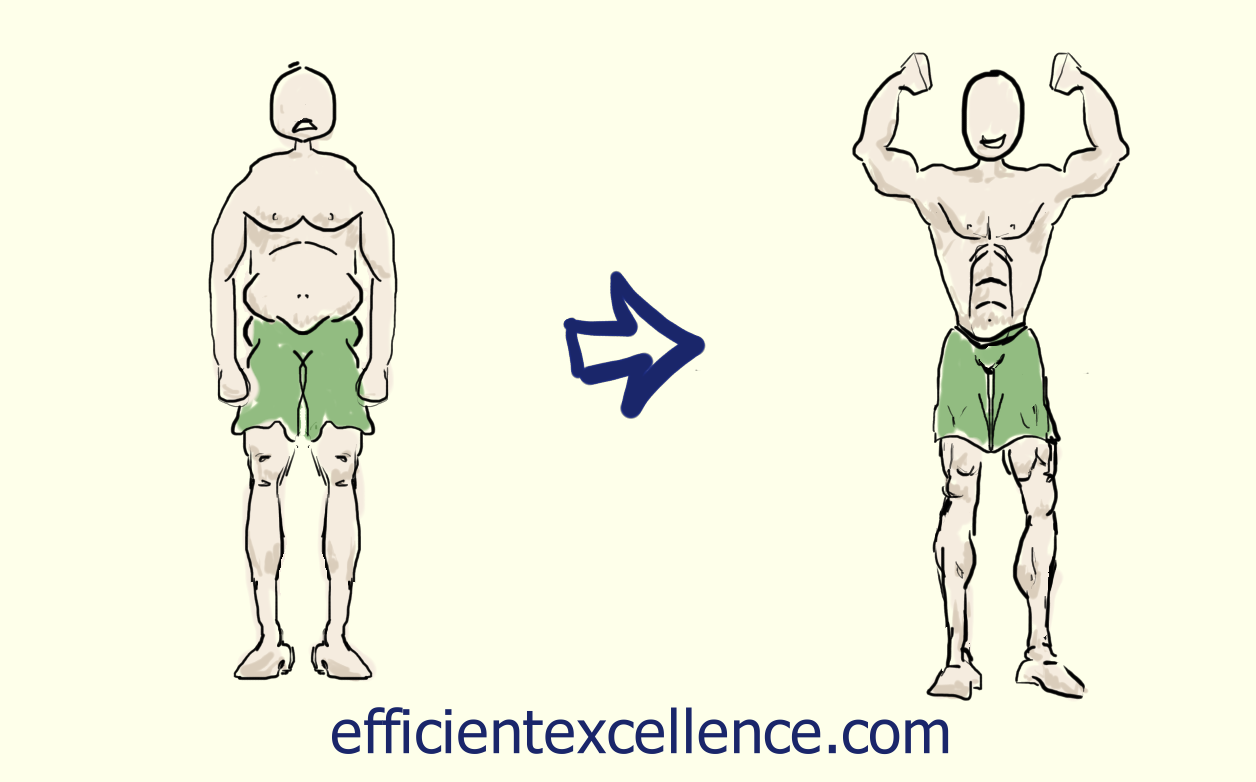How to lose weight (fat) or gain muscle: The Basics
(If you’d like to watch this on video instead, click here)
It seems like almost everyone who is into health and fitness, or who just wants to lose weight is concerned about calories, sometimes obsessively so. Why all the fuss over calories?
A calorie (or “Kilocalorie”/”kcal”/”Calorie” for all you scientists), is a unit of energy.
Energy is stored in the chemical bonds of the food we eat. Our body breaks down food, and uses the energy to fuel resting and acting functions like exercise responses, cell growth, and tissue repair.
Losing and gaining weight is simple, thermodynamically speaking. It can be summed up with the idea “Calories In vs. Calories Out” (CICO).
“Calories In” comes from the food you eat, and “calories out” leaves your body by the energy it uses for its daily functions, and the energy it burns off through activity (exercise).
To lose weight, you simply need to consume less energy than your body burns off. Basically, you need to be in a caloric deficit. This forces your body to turn to your stored energy reserves (fat) for energy. Your body then uses the energy released from breaking down stored fat to fuel its daily functions and meet energy demands.
 Your body fat is an energy bank you dip into when you don’t have enough caloric-money for the day.
Your body fat is an energy bank you dip into when you don’t have enough caloric-money for the day.
There’s also one key ingredient you need to incorporate to make sure you keep (or gain) as much muscle as possible while losing as much fat as you can: exercise. Besides assisting with a calorie deficit, exercise (in particular, resistance training) ensures that you keep as much precious muscle as possible when losing weight.
So, how do you actually go about losing fat or gaining muscle?
Luckily for you, there are different methods and techniques to achieving your health and physique goals. You can use one or multiple of these methods (and to varying degrees of strictness!) to effectively reach your goals, but ultimately, it all comes down to calories in vs. calories out.
You may need to experiment to figure out which methods work best for your particular circumstances. Perhaps you’re a highly analytic individual who wants to weigh 165.5 lbs, enjoys tracking every single nutrient to the gram, and perform better on relatively higher fat meals every 3 hours. Maybe you are a morbidly obese person who just wants to get to a healthy bodyweight and would never consider touching a food scale. Use a method that meets these requirements.
Factors like contentment, fullness, energy levels and adherence are a few examples of some factors to consider. Remember that ultimately, whatever strategy you use needs to be both effective and sustainable.
This is a lifestyle change, not a one-off endeavor.
How to lose weight (fat) or gain muscle: Methods
The most precise way to make body composition changes is to use a tracking method, particularly calorie counting. You can only count calories and get to your desired weight, but it is better to also track macronutrients (“macros”) to optimize your physical and mental performance.
In the rest of this series, I’ll show you how to do both.
Click here for Part 2: Tracking Methods (coming soon).

